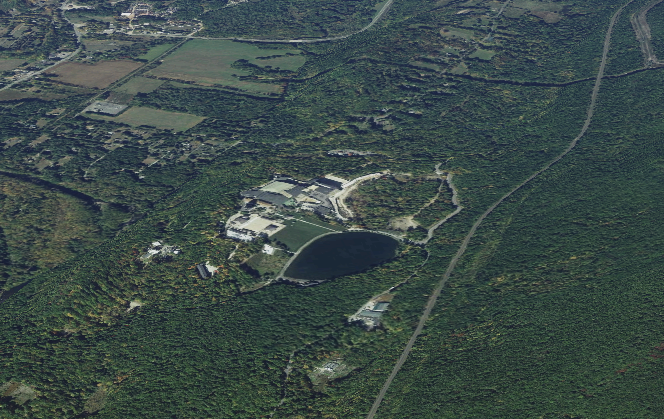0: The Centre
Sixty kilometres north of New York City, in the sparsely populated rural town of Deerpark, there is a compound that looks something like a fortified university campus. Behind its gates lies an array of dormitories, classrooms, and libraries, all situated in manicured grounds along the margin of an artificial lake. It also features a large Chinese temple built in the Tang Dynasty style with an adjoining seventy-five-foot pagoda. This is Dragon Springs, the de facto global centre of Falun Gong (also known as Falun Dafa), a new religious movement that emerged in the People’s Republic of China in the closing years of the twentieth century. As access to the complex is permitted only to an elite subsection of followers, little is known of this secret world, other than that it houses educational and training facilities related to Falun Gong and its associated organisations. The notoriously reclusive founder and spiritual leader of the movement, Li Hongzhi, is rumoured to reside within. Residents of Deerpark have expressed mounting unease regarding the compound’s presence, a feeling exacerbated by its owners’ investment in a number of properties nearby and inside of the town itself.

The picture is an incongruous one: what led to the appearance of this complex in a parochial corner of the northeast United States? To better understand, we need to look at the history, trajectory, and conduct of the Falun Gong movement. Over the following series of posts, I hope to provide an account of Falun Gong’s growth and examine its discursive intertwinement with spirituality, identity, and notions of belonging in the global Chinese diaspora. This will entail an overview of its formation and historical antecedents, the major spiritual and ideological tenets of the belief system it promotes, the purposes it fulfils for its adherents, its organisational structure, and its controversial involvement in the international political arena, as all of these factors have specific implications for how it wields its influence on the level of the individual and the community.
So: in this series of posts, I will consider Falun Gong’s transformative impact and the question of how it has reconfigured diaspora spirituality by examining its effects across multiple scales, from the most granular individual experiences of the movement and its teachings all the way up to its interactions with state actors. This inquiry will hinge on how currents of change propagate through two types of transregional networks:
- first, Falun Gong’s proprietary infrastructure of media outlets and affiliated organisations, and its international reach (the ‘pipelines’ in the title, intended to suggest efficient and uninterrupted transmission of spiritual and ideological content over arbitrary spans of physical distance and time);
- and second, the pre-existing, historical linkages of religiosity and spiritual belief present in the Chinese diaspora, established and tended by immigrant communities over successive generations as they moved out of their places of origin (the ‘pathways’, so called as they comprise phenomena that are more intelligible on the local scale, and also involve a degree of individual agency).
This dichotomy is the basis for a sub-question with its own implications for the extent to which the rise of Falun Gong signifies a distinct break from the past: is its spread more an outcome of an established and ongoing process, or a phenomenon that depends on the specific condition of modernity?
This series of posts is adapted from a research paper I wrote in 2021 during the final taught semester of my graduate studies.